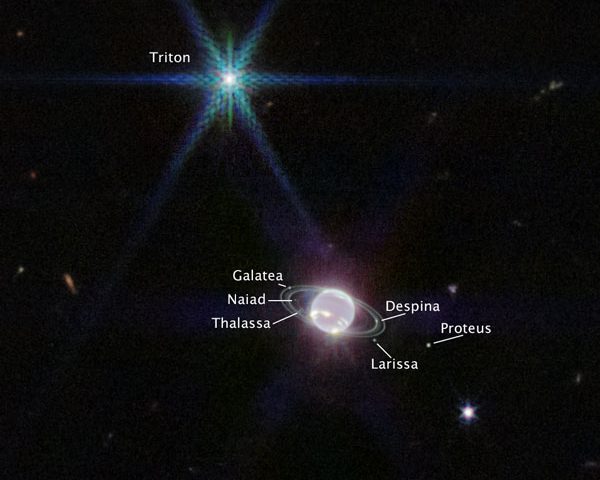What’s New in Space this Week?

The Voyage to the Deep Experience
September 22, 2022
MOSH Hosts Larry Yazzie and The Native Pride Dancers
September 22, 2022James Webb Space Telescope captures stunning image of Neptune’s rings and moons
The JWST captured its first image of the ice giant and revealed its rings for the first time in over three decades. Neptune’s seven of fourteen moons are also visible. Although the JWST was created to view imagery of extremely distant cosmic objects, it’s still delivering eye-opening results in our own Solar System! View the Webb’s Near Infrared Camera image here.
Jupiter is at its closest to Earth in 59 years, NASA says
Don’t forget to look up at the night sky on September 25 – 26 to see the Gas Giant appearing its closest to Earth. Jupiter will enter the astronomical arrangement known as opposition on September 26, meaning the planet will be directly opposite the Sun as viewed from Earth. As a result, Jupiter will be unusually bright and large, offering views and photographic opportunities. Read the article here.
NASA’s InSight hears its first meteoroid impacts on Mars
The InSight (Interior Exploration using Seismic Investigations, Geodesy and Heat Transport) robotic Mars lander has detected seismic waves from space rocks that crashed on Mars in 2020 and 2021. Listen to the impact audio here.
2022 September equinox: All you need to know
Happy first day of Fall! The September equinox marks the sun’s crossing above Earth’s equator, moving from north to south. This astronomical event is caused by Earth’s tilt on its axis and where our planet is located on its orbit around the Sun. The equinox occurs twice in a year and is the point in time when the Sun illuminates the northern and southern hemispheres equally. Learn more about the autumnal equinox here.
Artemis: NASA’s Moon rocket complete fueling test
The last attempt to launch the Artemis 1 was scrubbed due to a liquid hydrogen leak and the new launch date is dependent on a critical fueling test that passed yesterday, Sept. 21. Controllers filled the Space Launch System vehicle with 2.7 million liters of liquid hydrogen and oxygen, a test previously impossible to run due to the leaks. The new launch date is scheduled for Wednesday Sept. 27. Read more here.


